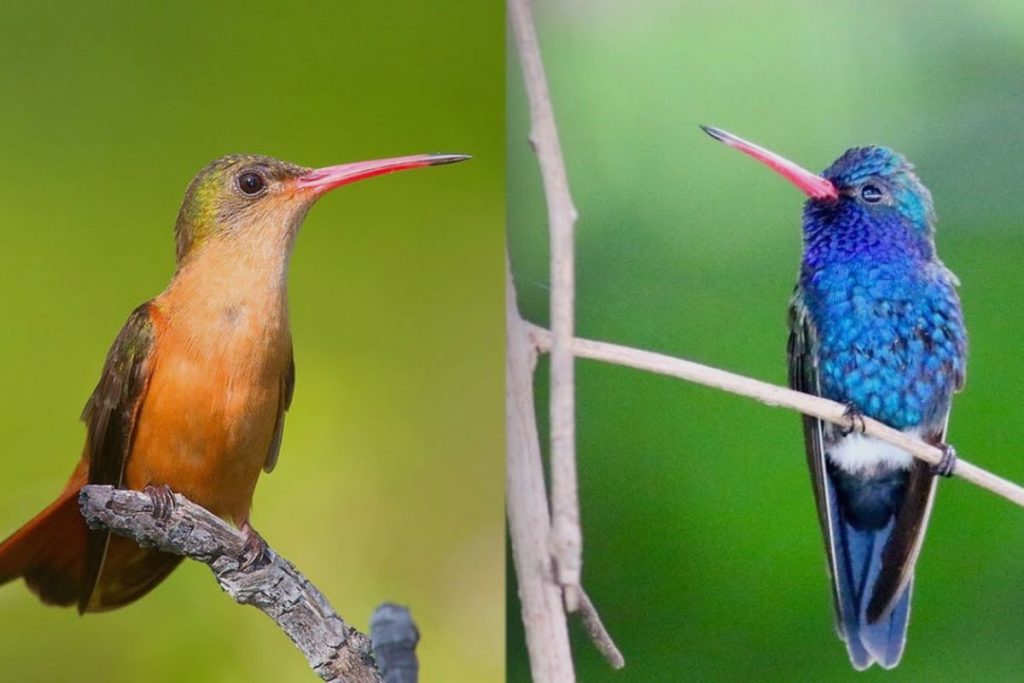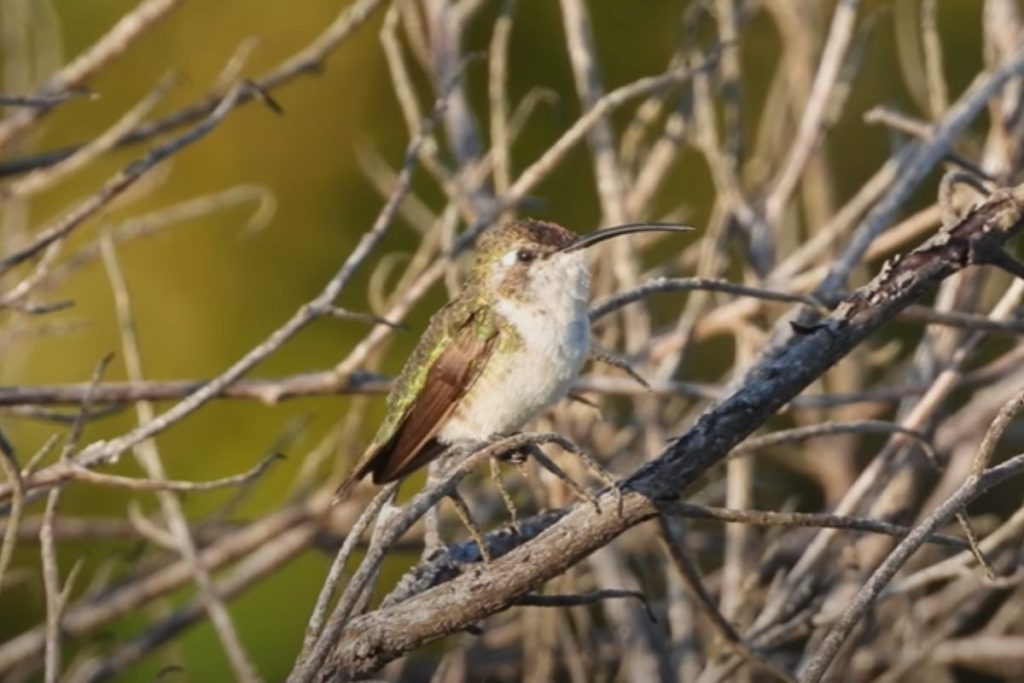Do hummingbirds exist in Mexico? Yes, there are plenty of Hummingbirds In Mexico. Mexico is a paradise for hummingbird fans, with approximately 58 species of these fascinating birds flitting about in the country’s diverse habitats. As one of the most biodiverse countries on the planet, Mexico provides the perfect environment for hummingbirds to thrive.
These captivating creatures not only contribute to the country’s rich flora and fauna but also serve as essential pollinators for countless plant species. In this blog post, we’ll delve into the world of hummingbirds in Mexico, exploring the various species, their habitats, and how you can spot them during your visit.
- A Symphony of Species: Mexico's Dazzling Hummingbird Diversity
- The Habitats of Mexican Hummingbirds: Where to Find These Delightful Birds
- Tips for Spotting and Attracting Hummingbirds in Mexico
- A Thoughtful Approach to Conservation: Protecting Mexico's Hummingbirds
- Conclusion: Embracing Mexico's Hummingbird Heritage

A Symphony of Species: Mexico’s Dazzling Hummingbird Diversity
With over 300 recognised hummingbird species worldwide, Mexico’s impressive roster of 58 species is a testament to the country’s vibrant ecosystems. Some of the most iconic hummingbird species you might encounter during your visit include:
- Ruby-throated Hummingbird: This striking bird is most commonly found in eastern Mexico, where it breeds during the summer months. The males are easily recognisable by their iridescent ruby-red throats and bright green backs.
- Violet-crowned Hummingbird: As its name suggests, this species boasts a violet-blue crown that contrasts with its white chest and greenback. It is widespread throughout Mexico and can be found in a variety of habitats.
- Broad-billed Hummingbird: This eye-catching species is characterised by its brilliant blue-green plumage and bright red bill. It inhabits a variety of habitats, from arid scrublands to mountain forests.
- Mexican Sheartail: This unique hummingbird is endemic to Mexico and can be found along the Yucatan Peninsula. Its elongated tail feathers and iridescent green plumage make it a stunning sight to behold.

The Habitats of Mexican Hummingbirds: Where to Find These Delightful Birds
Hummingbirds in Mexico can be found across a wide range of habitats, from arid deserts and tropical rainforests to high-altitude pine-oak forests. Some prime locations for hummingbird spotting include:
La Paz, Baja California Sur: This region is home to the endemic Xantus’s Hummingbird, which can be found flitting among the cacti and desert scrub.
Oaxaca: This southern state is known for its rich birdlife, including the endangered Short-crested Coquette and the elusive Sparkling-tailed Hummingbird.
San Blas, Nayarit: Located on the Pacific coast, this area is a popular birdwatching destination and hosts a variety of hummingbird species, such as the Cinnamon Hummingbird and the Violet-crowned Hummingbird.
Veracruz: The cloud forests in this eastern state provide a lush habitat for several hummingbird species, including the beautiful Green Violet-ear and the charismatic Long-tailed Hermit.
Tips for Spotting and Attracting Hummingbirds in Mexico
For those keen to catch a glimpse of these mesmerising creatures, follow these tips to increase your chances of spotting hummingbirds in Mexico:
- Visit during the right season: While hummingbirds can be found year-round in Mexico, they are most abundant during the warmer months when flowers are in bloom.
- Look for their favourite plants: Hummingbirds are attracted to brightly coloured, tubular flowers such as fuchsias, trumpet vines, and salvias. Keep an eye out for these plants when exploring natural habitats.
- Carry binoculars: As hummingbirds are small and quick, having a good pair of binoculars can help you spot them more easily.

A Thoughtful Approach to Conservation: Protecting Mexico’s Hummingbirds
Mexico’s hummingbirds face various challenges, including habitat loss, climate change, and the illegal pet trade.
As a result, some species are classified as endangered or near-threatened. Here are some ways you can contribute to the conservation of these precious creatures during your visit:
- Support local ecotourism: Choose to visit protected areas, such as national parks and reserves, that are managed with conservation in mind. By doing so, you contribute to the local economy and help support ongoing conservation efforts.
- Be a responsible birdwatcher: Follow ethical birdwatching guidelines, such as maintaining a respectful distance from birds and not disturbing their nests.
- Share your sightings with citizen science projects: Reporting your hummingbird sightings to platforms like eBird and iNaturalist can help researchers and conservationists monitor species distribution and population trends.
Conclusion: Embracing Mexico’s Hummingbird Heritage
As we conclude our journey through the enchanting world of hummingbirds in Mexico, it’s clear that these tiny wonders are an integral part of the country’s rich natural tapestry. Their dazzling colours, astonishing aerial acrobatics, and crucial role as pollinators make them a true treasure worth cherishing.
As you explore the diverse habitats of Mexico, keep your eyes peeled for these incredible birds, and remember that their continued existence is a testament to the delicate balance of the natural world. By appreciating and protecting these remarkable creatures, we help ensure that future generations can marvel at the captivating beauty of Mexico’s hummingbirds.
Related Posts to Read:
- Best Hummingbird Feeders.
- Are There Hummingbirds in Europe?
- Are There Hummingbirds in Australia?
- Are There Hummingbirds In The Caribbean?
- Are There Hummingbirds In Canada?
- Are There Hummingbirds In Jamaica?
- Are There Hummingbirds In Florida?
- Are There Hummingbirds In Massachusetts?
- Are There Hummingbirds In New Zealand?
- Are There Hummingbirds In Michigan?
- Are There Hummingbirds In Texas?
- Are There Hummingbirds In New Jersey?
- Are There Hummingbirds In New York?
References:
- About Hummingbird (Wikipedia).
- About Mexico (Wikipedia)
- Greenewalt, C. H. (1960). Hummingbirds. New York: Doubleday. Google Scholar.
